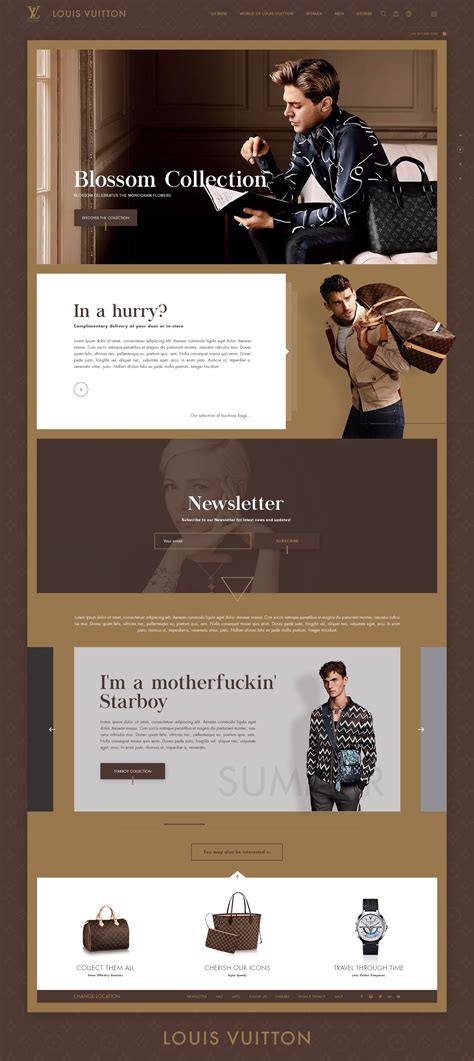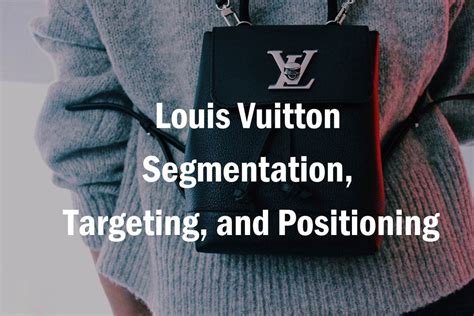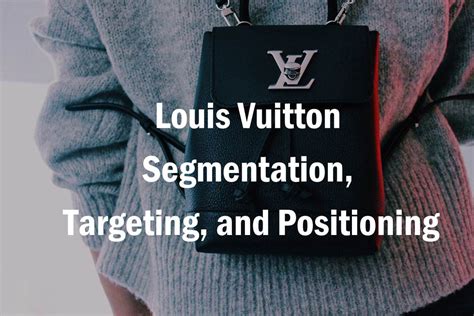louis vuitton segmet population | Louis Vuitton customer segmentation louis vuitton segmet population In terms of demographic segmentation, Louis Vuitton targets individuals within a specific age and income bracket. Typically, the brand caters to consumers aged between 30 to 50 years - . Whether you're buying a used Louis Vuitton Pochette from a private seller or a well-established designer resale platform, it's crucial to be aware of the main differences between authentic designer items and replicas to avoid paying several thousand dollars for a fake LV Pochette.How to tell if Louis Vuitton is real (or fake) Bags: Check the “LOUIS VUITTON ®” inscription engraved in leather. Fake bags always have thicker text. Footwear: Verify the inscriptions on the soles. Fake shoes always have too little space in-between the text. Clothing: Look at the wash tags. A fake Louis Vuitton always has very thick prints.
0 · Louis Vuitton website
1 · Louis Vuitton usa
2 · Louis Vuitton targeting
3 · Louis Vuitton target markets
4 · Louis Vuitton rate segmentation
5 · Louis Vuitton market segmentation
6 · Louis Vuitton customer segmentation
7 · Louis Vuitton brand profile
Latvijas Nacionālais arhīvs / Diena. Cilvēks = Valsts. PČ hokejā - 2024. Re! Forma. Kuram tas rūp? Rīgā +10 °C. Daļēji apmācies. Piektdiena, 10. maijs.
In 2023, LVMH Group’s fashion and leather goods segment brought in over 42 billion euros in global sales, an impressive figure that signals the recovery of the global personal luxury goods .

When it comes to luxury fashion owners, brand awareness of Louis Vuitton is at 86% in the United States. The survey was conducted using the concept of aided brand . Millennials are emerging as a powerful segment in luxury consumption, driven by their interest in unique experiences, sustainable fashion, and cutting-edge technology. .In terms of demographic segmentation, Louis Vuitton targets individuals within a specific age and income bracket. Typically, the brand caters to consumers aged between 30 to 50 years - . One year after the pandemic brought a halt to in-person shopping, crowds are lining up outside of Louis Vuitton stores to buy ,000 handbags in the U.S. and abroad.
Louis Vuitton’s marketing mix is a masterclass in luxury branding. With a harmonious blend of product, price, promotion, and place, Louis Vuitton continues to set new benchmarks . Vuitton is the biggest luxury brand in the world with approximately €18 billion in 2021 sales, about 40 percent more than pre-pandemic levels. It’s also one of the most .
Christian Dior, Fendi, Marc Jacobs, and Givenchy, among others, all operate under LVMH’s fashion and leather goods segment, which reported a sales revenue of approximately . According to Wikipedia, the company was formed in Paris, 1987, by Bernard Arnault, through the merger of fashion house Louis Vuitton with Moët Hennessy and is .
In 2023, LVMH Group’s fashion and leather goods segment brought in over 42 billion euros in global sales, an impressive figure that signals the recovery of the global personal luxury goods .
Louis Vuitton divides their customer base into demographic groups based on age, gender, and disposable income. Louis Vuitton specifically targets women aged 18 to 54 with high yearly salaries of ,000 or more, indicating considerable discretionary money. When it comes to luxury fashion owners, brand awareness of Louis Vuitton is at 86% in the United States. The survey was conducted using the concept of aided brand recognition, showing. Millennials are emerging as a powerful segment in luxury consumption, driven by their interest in unique experiences, sustainable fashion, and cutting-edge technology. Although individually they may have less purchasing power than previous generations , their population size and preference for accessible luxury make them a significant driver of .
In terms of demographic segmentation, Louis Vuitton targets individuals within a specific age and income bracket. Typically, the brand caters to consumers aged between 30 to 50 years - individuals who are established in their careers and have substantial purchasing power. One year after the pandemic brought a halt to in-person shopping, crowds are lining up outside of Louis Vuitton stores to buy ,000 handbags in the U.S. and abroad. Vuitton is the biggest luxury brand in the world with approximately €18 billion in 2021 sales, about 40 percent more than pre-pandemic levels. It’s also one of the most profitable players in the luxury sector, with an EBIT margin of over 45 percent. Louis Vuitton’s marketing mix is a masterclass in luxury branding. With a harmonious blend of product, price, promotion, and place, Louis Vuitton continues to set new benchmarks for success and captivate the hearts of discerning consumers worldwide.
Christian Dior, Fendi, Marc Jacobs, and Givenchy, among others, all operate under LVMH’s fashion and leather goods segment, which reported a sales revenue of approximately 42 billion in 2023. According to Wikipedia, the company was formed in Paris, 1987, by Bernard Arnault, through the merger of fashion house Louis Vuitton with Moët Hennessy and is growing consistently, with Billion in revenue in 2019 alone. In 2023, LVMH Group’s fashion and leather goods segment brought in over 42 billion euros in global sales, an impressive figure that signals the recovery of the global personal luxury goods .Louis Vuitton divides their customer base into demographic groups based on age, gender, and disposable income. Louis Vuitton specifically targets women aged 18 to 54 with high yearly salaries of ,000 or more, indicating considerable discretionary money.
When it comes to luxury fashion owners, brand awareness of Louis Vuitton is at 86% in the United States. The survey was conducted using the concept of aided brand recognition, showing. Millennials are emerging as a powerful segment in luxury consumption, driven by their interest in unique experiences, sustainable fashion, and cutting-edge technology. Although individually they may have less purchasing power than previous generations , their population size and preference for accessible luxury make them a significant driver of .
In terms of demographic segmentation, Louis Vuitton targets individuals within a specific age and income bracket. Typically, the brand caters to consumers aged between 30 to 50 years - individuals who are established in their careers and have substantial purchasing power. One year after the pandemic brought a halt to in-person shopping, crowds are lining up outside of Louis Vuitton stores to buy ,000 handbags in the U.S. and abroad. Vuitton is the biggest luxury brand in the world with approximately €18 billion in 2021 sales, about 40 percent more than pre-pandemic levels. It’s also one of the most profitable players in the luxury sector, with an EBIT margin of over 45 percent. Louis Vuitton’s marketing mix is a masterclass in luxury branding. With a harmonious blend of product, price, promotion, and place, Louis Vuitton continues to set new benchmarks for success and captivate the hearts of discerning consumers worldwide.

Christian Dior, Fendi, Marc Jacobs, and Givenchy, among others, all operate under LVMH’s fashion and leather goods segment, which reported a sales revenue of approximately 42 billion in 2023.
Louis Vuitton website

iphone 7 plus hoesjes louis vuitton

Your vehicle will however be covered for damage caused by fire or theft. With LV= you can also choose between a number of different car insurance policy types including multi-car insurance - with cover for up to 6 cars on one policy, learner driver insurance, or car insurance specifically for electric vehicles.
louis vuitton segmet population|Louis Vuitton customer segmentation

























